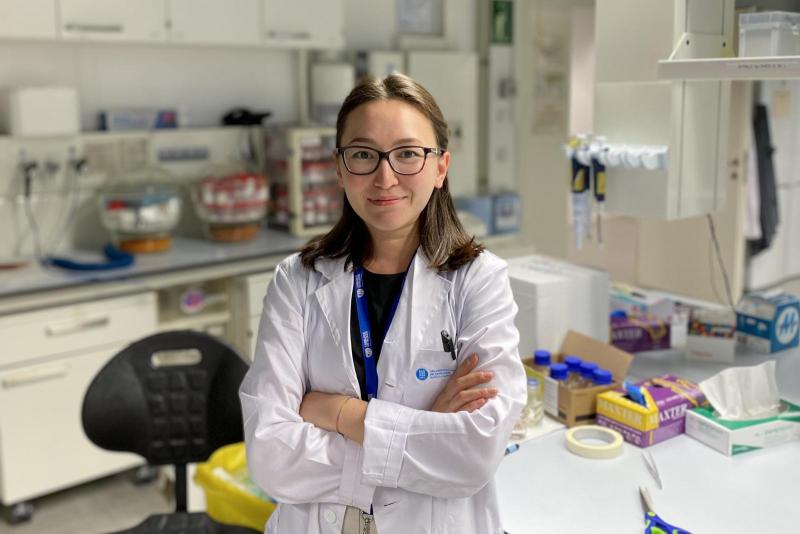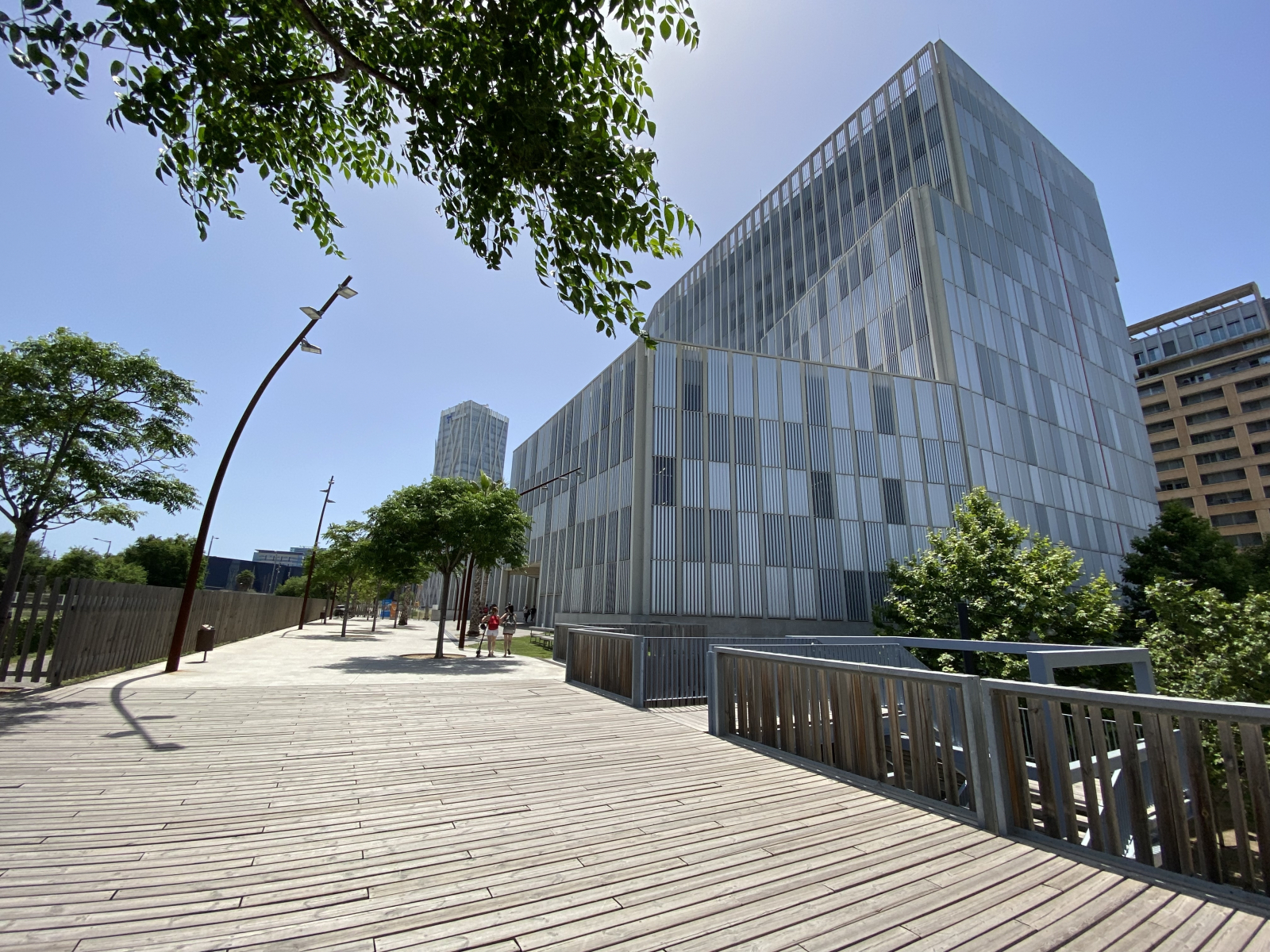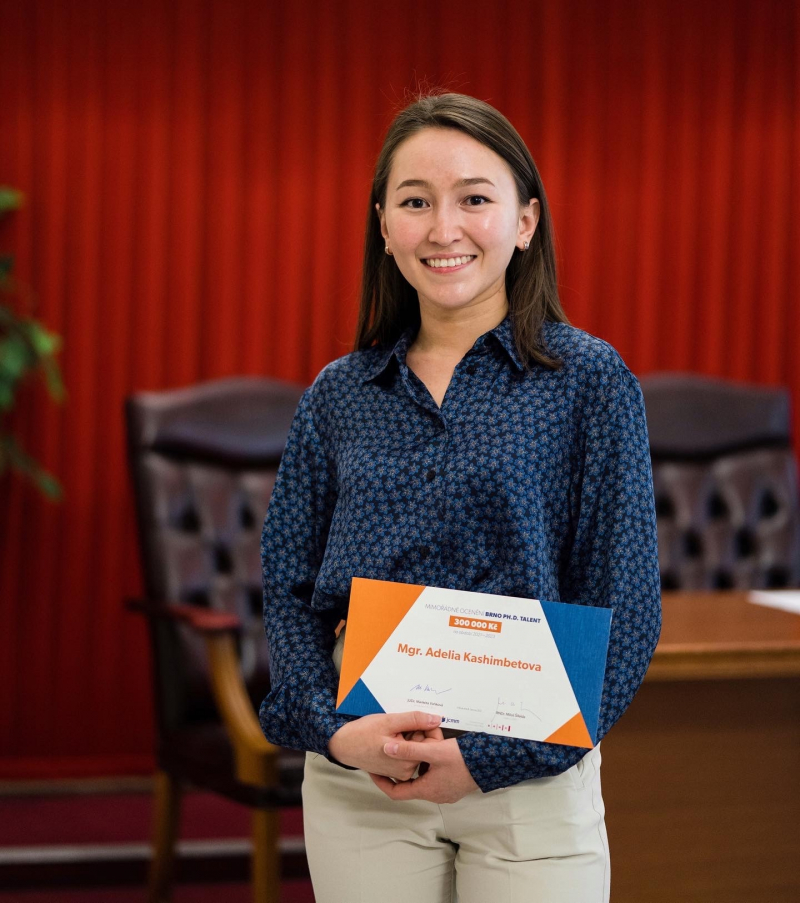Topic
Simpler bone regeneration process. CEITEC researcher tests unique combination of titanium and hydroxyapatite

In the case of bone injuries and fractures, at best, a cast is needed, and for more complicated fractures, surgery is required. Various natural or synthetic materials are used for bone tissue replacement. One of the implantation materials is calcium phosphate bone cements (CPCs). When mixed with the liquid, they create a paste that can harden on its own after injection into the bone. Solidification forms hydroxyapetite, a mineral that aids in bone healing. Adelia Kashimbetová, a researcher from CEITEC BUT, and her colleagues are pioneers in the processing of CPCs for bone healing and additive manufacturing (3D printing). They have found out ways to prepare this material to have the best possible mechanical properties. The results of their research were published in the prestigious Ceramics International journal.
Success already during studies
Adelia Kashimbetová is a student in the Advanced Materials and Nanoscience PhD programme at CEITEC BUT. Under the guidance of Edgar Montufar, she is currently working in the research group on Advanced Materials and Coatings for Industry, focusing on biomimetic processing of titanium and hydroxyapatite composites. She sees the future of bone implants in this combination. "Studies that examined titanium and hydroxyapatite composites already exist; this combination is not new. The main problem was the undesirable reaction between these materials when processed at high temperatures. Biomedicine would not allow such materials. So, we tried to find alternative processing approaches. We take advantage of the fact that the calcium phosphate-based cement solidifies and hardens by hydrolysis at physiological temperature and shapes itself as needed," explains Kashimbetová. Compared to ceramics, which are also used in implants, titanium is said to be cheaper, harder and more durable. It also has mechanical properties similar to bone. "It’s simply the best candidate," adds Adelia with a smile, defending her choice of material.

A bone implant made of a titanium and hydroxyapatite composite can be imagined as a 3D titanium grid serving as a scaffold. A paste made of calcium phosphate cement is injected into the holes. During hydrolysis, hydroxyapatite crystals grow through the titanium grid, creating a complete implant. Such an implant is surgically inserted into the missing section of bone, such as the femur. Titanium serves as a mechanical support, while hydroxyapatite provides multifunctionality in the form of bioactivity, osteoconductivity and osteoinductivity, allowing the bone to heal and regenerate in about 6 weeks. "The advantage of the whole process is its simplicity. We don't need many difficult steps, personnel, expensive equipment or extra money to achieve the goal. Thanks to 3D printing, we produce personalised implants. All we need is a paste that solidifies in water," summarises Adelia.
As part of her doctoral studies, she won the prestigious Brno Ph.D. Talent competition two years ago. Another success for her was the publication of the aforementioned article. "It was the first time my name appeared at the first author of a study, and in such an influential journal. It's a huge achievement for me," she adds. Now, she has also gone on an internship to Barcelona, where she and a group of other students are researching various biomaterials, including titanium and hydroxyapatite. In addition, they add metallic ions to the titanium, giving it antibacterial properties.
The finer, the better
In the published study, Adelia Kashimbetová and her colleagues focused only on hydroxyapatite, which is biocompatible, injectable into bone and bioresorbable. It is created by hydrolysis of calcium phosphate based cements (CPCs). Research is still being carried out on how to improve its mechanical, osteoconductive or antibacterial properties. The use of this mineral is attractive because it naturally occurs in bones.

Biomedicine demands the latest and greatest
Even after completing her doctoral studies, Adelia Kashimbetová continues to see herself in the research of biomaterials for bone implants. According to her, there will always be something to do because biomedicine needs something new and better continuously. The demand is constantly growing. Moreover, one must respond to current situations such as an aging population or increasing obesity rates. All of these factors lead to more frequent bone diseases such as osteoporosis, and so on. "There always has to be a solution to help these people. That is why I like this field, and I would like to continue in it," concludes Adelia Kashimbetová.
(CEITEC VUT)
Women from BUT who move the world of science and technology
CEITEC scientist creates 3D model of a rare cave-dwelling salamander to facilitate its research
Who is Martin Pumera, one of the most cited scientists in the world?
Brno is an oasis of peace for me, I feel relaxed here, says Chinese doctoral student Xia
Companies can test AI solutions for industry under exceptionally favourable conditions in testbeds in Prague, Brno and Ostrava